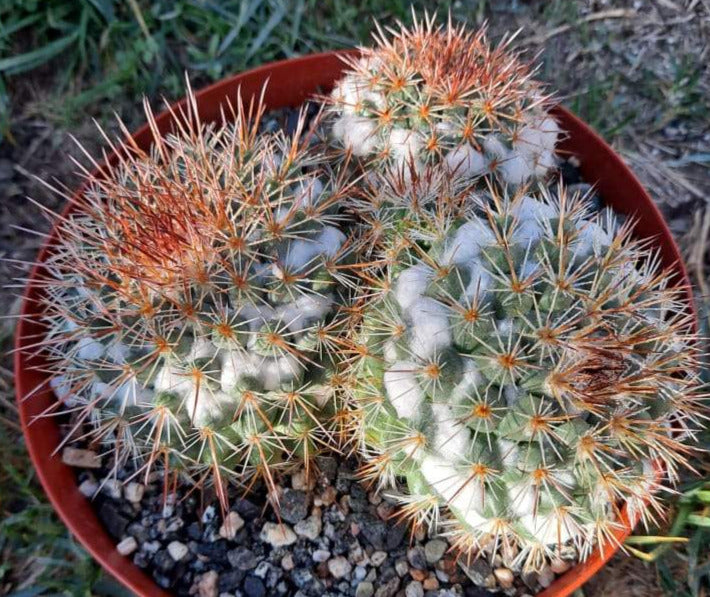Mammillaria mammillaris Large Live Cactus in 8 Inch Exact Specimen
Mammillaria mammillaris Large Live Cactus in 8 Inch Exact Specimen
Couldn't load pickup availability
Origin and Habitat: Mammillaria mammillaris is found on the coast of Venezuela and and the adjacent islands Antigua and Barbuda; Aruba; Bonaire, Saint Eustatius and Saba (Saba, Sint Eustatius); Curaçao; Dominica; Grenada; Guadeloupe; Martinique; Montserrat; Saint Kitts and Nevis; Saint Lucia; Saint Martin (French part); Saint Vincent and the Grenadines; Saint Marten (Dutch part); Trinidad and Tobago. It is a common species with a widespread distribution and abundant populations especially in Venezuela.
Habitat: It is found in coastal and mountainous regions at medium altitude (up to 1.500 m) in clearings in spiny scrub lands and thorny forests and do not tolerate frost. It also occurs on offshore rocky islands. Part of its habitat is being converted for agricultural activities such as crop production. It is unknown whether collecting from the wild (for ornamental plants) is affecting the population status since this species is relatively common.
Stem: Globose to short cylindrical, light to dark green, shiny, 8 to 20 cm in diameter. With latex.
Tubercles: Tubercles in spiraled rows, ovoidal to conical up to 1 cm tall, parastichy number 8-13, there is no or few wool in the axil.
Areoles: Rounded with abundant white wool especially the younger one..
Radial spines: Spreading, 6 - 16, yellowish-white to reddish brown, becoming grey with age, 5 - 8 mm long.
Central spines: 3 - 5, reddish brown, with dark tips, later grey, 7 - 8 mm long, uppermost longest.
*Flowers: Diurnal, very small, inconspicuous, almost concealed among the tubercles, funnelform, white, greenish, yellowish or creamy white, 5 - 12 mm long.
Fruits: Club shaped, scarlet-red, 10 - 20 mm long, edible.
Seeds: Small, brown, rough.
Blooming season: Late summer.
Share





